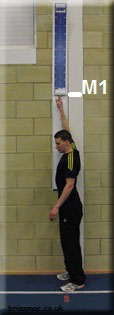- Trade-in Value For Macbook Air
- Trade-in Value For Mac
- Trade-in Value For Mac
- Market Value For Macbook Pro
Excel for Microsoft 365 for Mac Excel 2019 for Mac Excel 2016 for Mac Excel for Mac 2011 More. Less If your sheet contains zero values or contains calculations that produce zero values, you can hide the values or use formatting options to change how the values will display. PennyMac’s Home Value Estimator can take the address of a property and weigh multiple factors in order to give you a reliable estimate. In addition to the overall value, you also get estimated price per square foot, property details, sales history and value history.
Minimum alveolar concentration or MAC is the concentration of a vapour in the alveoli of the lungs that is needed to prevent movement (motor response) in 50% of subjects in response to surgical (pain) stimulus. MAC is used to compare the strengths, or potency, of anaesthetic vapours.[1] The concept of MAC was first introduced in 1965.[2]

MAC actually is a median value, not a minimum as term implies. The original paper proposed MAC as the minimal alveolar concentration,[3] which was shortly thereafter revised to minimum alveolar concentration.[4] A lower MAC value represents a more potent volatile anesthetic.
Other uses of MAC include MAC-BAR (1.7-2.0 MAC), which is the concentration required to block autonomic reflexes to nociceptive stimuli, and MAC-awake (0.3-0.5 MAC), the concentration required to block voluntary reflexes and control perceptive awareness.
Formal definition[edit]
The MAC is the concentration of the vapour (measured as a percentage at 1 atmosphere, i.e. the partial pressure) that prevents patient movement in response to a supramaximal [5] stimulus (traditionally a set depth and width of skin incisions) in 50% of subjects. This measurement is done at steady state (assuming a constant alveolar concentration for 15 minutes), under the assumption that this allows for an equilibration between the gasses in the alveoli, the blood and the brain. MAC is accepted as a valid measure of potency of inhalational general anaesthetics because it remains fairly constant for a given species even under varying conditions.
Meyer-Overton hypothesis[edit]
The MAC of a volatile substance is inversely proportional to its lipid solubility (oil:gas coefficient), in most cases. This is the Meyer-Overton hypothesis put forward in 1899–1901 by Hans Horst Meyer and Charles Ernest Overton. MAC is inversely related to potency, i.e. high MAC equals low potency.
The hypothesis correlates lipid solubility of an anaesthetic agent with potency (1/MAC) and suggests that onset of anaesthesia occurs when sufficient molecules of the anaesthetic agent have dissolved in the cell's lipid membranes, resulting in anaesthesia. Exceptions to the Meyer-Overton hypothesis can result from:
- convulsant property of an agent
- specific receptor (various agents may exhibit an additional effect through specific receptors)
- co-administration of Alpha2 agonists (dexmedetomidine) and/or opioid receptor agonists (morphine/fentanyl) can decrease the MAC[6][7]
- Mullin's critical volume hypothesis
- Positive modulation of GABA at GABAA receptors by barbiturates or benzodiazepines
Factors affecting MAC[edit]
Certain physiological and pathological states may alter MAC. For example, MAC increases with hyperthermia and hypernatremia. Conversely, anemia, hypercarbia, hypoxia, hypothermia, hypotension (MAP < 40 mmHg), and pregnancy seem to decrease MAC. Duration of anesthesia, gender, height and weight seem to have little effect on MAC.
Age has been shown to affect MAC. MAC begins to rise at one month of age with a peak at approximately 6 months of age. There is a subsequent steady decline in MAC with increasing age, with the exception of another peak during puberty.[4] There is a linear model that describes the change in MAC of approximately 6% per decade of age.
Medications, illicit drugs, and prior substance use history have also been found to affect MAC. For example, acute use of amphetamines, cocaine, ephedrine, and chronic use of alcohol increase MAC. Whereas, administration of propofol, etomidate, barbiturates, benzodiazepines, ketamine, opiates, local anesthetics, lithium, verapamil, and alpha 2-agonists (dexmedetomidine, clonidine) decrease MAC. Acute alcohol intoxication and chronic amphetamine use have also been found to decrease MAC.
MAC values are additive. For instance, when applying 0.3 MAC of drug X and 1 MAC of drug Y the total MAC achieved is 1.3 MAC. In this way nitrous oxide is often used as a 'carrier' gas to decrease the anesthetic requirement of other drugs.
Common MAC values[edit]
Values are known to decrease with age and the following are given based on a 40-year-old (MAC40):[8]
- Nitrous oxide - 104 [8]
- Xenon - 72 [8]
- Desflurane - 6.6 [8]
- Ethyl Ether - 3.2
- Sevoflurane - 1.8 [8]
- Enflurane - 1.63 [8]
- Isoflurane - 1.17 [8]
- Halothane - 0.75 [8]
- Chloroform - 0.5
- Methoxyflurane - 0.16
References[edit]

- ^'Policy: Ban on Use of Ether'. Laboratory Animal Science Center. Archived from the original on 2008-06-09. Retrieved 2008-11-10.
- ^Eger EI, Saidman LJ, Brandstater B (1965). 'Minimum alveolar anesthetic concentration: a standard of anesthetic potency'. Anesthesiology. 26 (6): 756–63. doi:10.1097/00000542-196511000-00010. PMID5844267.
- ^Merkel, Giles; Eger, Edmond I. (1963-05-01). 'A Comparative Study of Halothane and Halopropane AnesthesiaIncluding Method for Determining Equipotency'. The Journal of the American Society of Anesthesiologists. 24 (3): 346–357. doi:10.1097/00000542-196305000-00016. ISSN0003-3022. PMID13935000.
- ^ abEger, Edmond I.; Saidman, Lawrence J.; Brandstater, Bernard (1965-11-01). 'Minimum Alveolar Anesthetic ConcentrationA Standard of Anesthetic Potency'. The Journal of the American Society of Anesthesiologists. 26 (6): 756–763. doi:10.1097/00000542-196511000-00010. ISSN0003-3022. PMID5844267.
- ^Miller ANESTHESIOLOGY
- ^* Daniel M, Weiskopf RB, Noorani M, Eger EI (January 1998). 'Fentanyl augments the blockade of the sympathetic response to incision (MAC-BAR) produced by desflurane and isoflurane: desflurane and isoflurane MAC-BAR without and with fentanyl'. Anesthesiology. 88 (1): 43–9. doi:10.1097/00000542-199801000-00009. PMID9447854.
- ^Katoh T, Kobayashi S, Suzuki A, Iwamoto T, Bito H, Ikeda K (February 1999). 'The effect of fentanyl on sevoflurane requirements for somatic and sympathetic responses to surgical incision'. Anesthesiology. 90 (2): 398–405. doi:10.1097/00000542-199902000-00012. PMID9952144.
- ^ abcdefgh* Nickalls, R. W. D., & Mapleson, W. W. (August 2003). 'Age-related iso-MAC charts for isoflurane, sevoflurane, and desflurane in man'. British Journal of Anaesthesia. 91 (2): 170–4. doi:10.1093/bja/aeg132. PMID12878613.CS1 maint: multiple names: authors list (link)
Trade-in Value For Macbook Air
Trade-in Value For Mac
Get An Offer
Ship It Free
Get Paid Fast
We give new life to used devices and recycle responsibly
We strive to keep the chemicals in phones out of the environment to providea greener planet for future generations by finding your used device a loving new home.

How We Determine Our Offers
Our Gazelle experts inspect your device to provide an accurate payment amount.Here's a short video to give you an inside look at how we determine our offers.
This was so fast and easy and I love that my old phone wasn’t just tossed in the trash! We will definitely use Gazelle again and again!
Trade-in Value For Mac
Didn't know if I wanted to bother with the nuisance of sending in my old iPad, but you made it easy and I got frequent updates about where you were in the process. You even gave me more than I expected. Thank you!
Market Value For Macbook Pro
This is the second time I have used gazelle to sell my smart phone and I believe they give the fairest prices for your phone.
